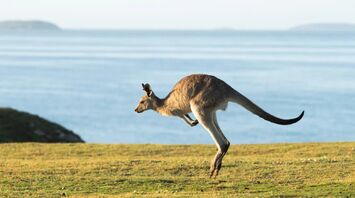Scientists Managed to Replicate Animal Movements With Striking Accuracy

A significant breakthrough in behavioral modeling has emerged, as scientists have developed a new simulation method that replicates animal movements with exceptional realism, nearly indistinguishable from the actual behavior of the nematode worm Caenorhabditis elegans, a widely studied model organism. This innovative approach, showcased in the Proceedings of the National Academy of Sciences, addresses a long-standing challenge in biology by accurately capturing the balance between predictable and random actions of living organisms. This is prepared by SSP.

Prof. Greg Stephens from the Okinawa Institute of Science and Technology describes their model’s uniqueness, as these systems exhibit animal movements that differ significantly from straightforward physical systems like pendulums. Meanwhile, Dr. Antonio Costa from the Paris Brain Institute highlights the intricate influences on animal behavior, including genetic, environmental, and developmental factors, which the model effectively encapsulates despite its complexity.
The creation of such a model required sophisticated steps: high-resolution video recordings of worm movements, machine learning analysis to trace shape changes over time, and determining the requisite amount of past data necessary for accurate predictions. The researchers confirmed the model’s accuracy by comparing simulated behaviors with real actions, leading to impressive correlations.

Beyond worms, this method's implications extend to medicine and technology. It holds promise for enhancing drug discovery leveraging organisms like zebrafish larvae and improving diagnostics for human movement disorders such as Parkinson’s disease. By offering continuous, objective movement analysis, this approach promises precise diagnoses and personalized treatments, going beyond subjective clinical observations.
Overall, this research marks a major stride in our understanding of animal behavior and exemplifies the power of interdisciplinary efforts. As these techniques evolve, they could unveil deeper insights into the interplay between genetics, environmental factors, and behavior across various species, heralding advances in behavioral science, robotics, and personalized medicine.



















